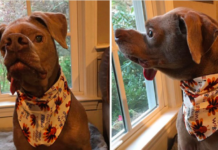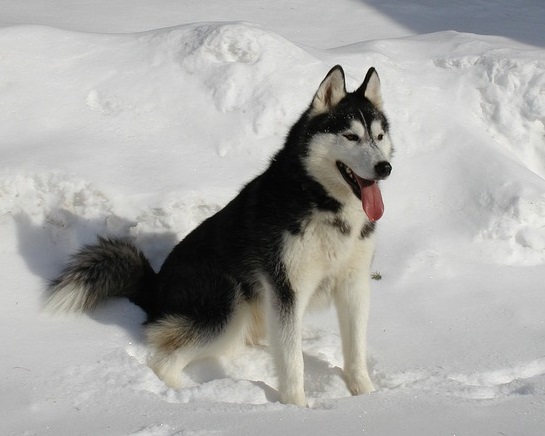Last Updated on November 8, 2023 by Fumipets
Rats may be wonderful pets. They come in a wide range of colors, sizes, and characteristics, are lovable, and can be taught to understand a few simple instructions. The brown rat, or Rattus norvegicus, which all domestic rats are descended from, has a blunt snout, tiny eyes and ears, and a tail that is as long as its body. However, certain variations do exhibit a genetic variance, such as hairless or even earless rats.
There are just seven distinct varieties of rats recognized by the American Fancy Rat & Mouse Association, and they are considered to be the standards for the species.
The 7 Types of Pet Rat Breeds
1. Standard Rat
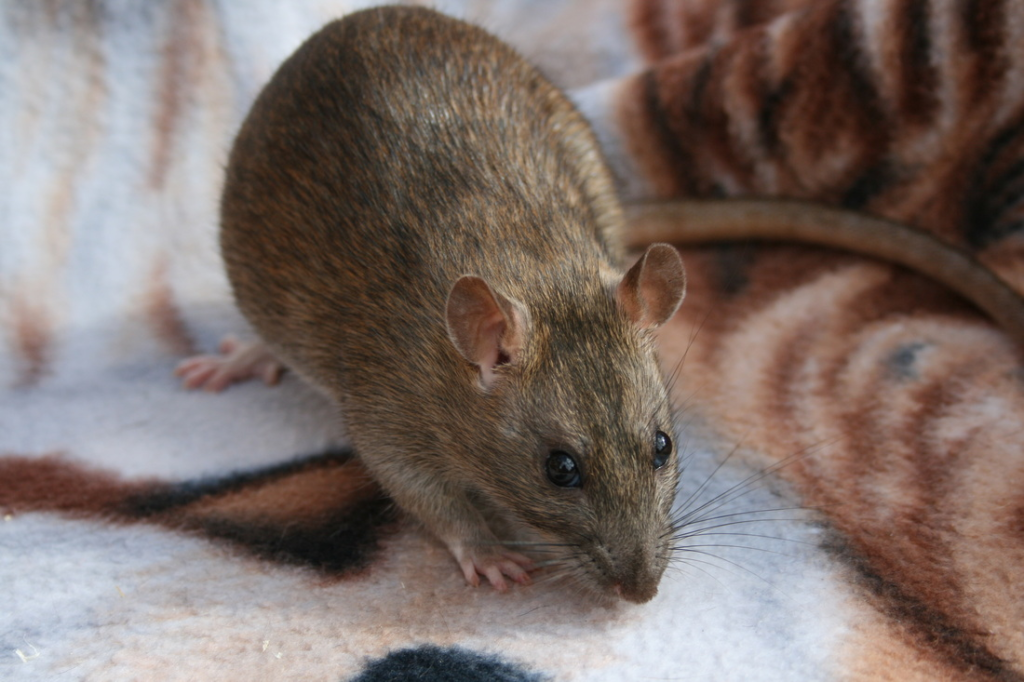
The Standard breed comes as near as it can to a wild brown rat. Its normal-sized ears are located on top of its head. It has a tail that is nearly the same length as its body and consumes food that would be considered typical rat food without any special needs. They may develop into devoted and obedient pets with frequent handling and responsible management.
2. Rex Rat
Many different kinds and species of animals have Rex variations. Like other Rex species, rex rats have hair that is crinkly or curly. They have a somewhat woolly texture to them and like to curl their eyelids and whiskers, earning them the moniker “sheep-rats.” The Rex’s fur does have a tendency to thin with age, which may result in bald areas. Double Rex Rats, which have two of the rex genes and have very tightly curled hair, may also be mentioned. Their eyebrows and whiskers may develop problems.
3. Manx Rat

The Manx rat’s absence of a tail makes it one of its most distinctive characteristics, earning it the nickname “tailless rat” often. Some may not have a complete tail but do have a tail stub. Because the tail is crucial to the rat’s balance and ability to care for itself, this kind of pet rat may need extra attention. Kennel clubs and groups don’t usually acknowledge tailless variations.
4. Sphynx Rat
Another rat breed that receives its popular name from its greatest distinguishing characteristic is the Sphynx. The hairless rat in this instance is fully hair-free thanks to careful breeding. Hairless rats are more susceptible to illness, so you’ll need to provide them extra warmth. Because doing so stimulates the Sphynx rat’s ongoing reproducing, keeping one as a pet is not advised.
5. Satin Rat

The Satin rat, sometimes known as the Satin Coat rat, gets its name from its long, silky coat. Young Satin rats may be difficult to distinguish from other breeds, and the easiest way to do so is to look at their whiskers. Except for the curled tip, the Satin Coat rat’s whiskers are all straight.
6. Dumbo Rat
The Dumbo rat has significantly bigger, lower-down ears on the side of its head as opposed to the typical rat’s ears, which are on top of its head. It seems as if the whole head is bigger. Owners may swear that their dogs live longer and are kinder, but none of these claims is supported by science. Their lifetime is comparable to that of a typical rat breed, and how friendly they are depends on how much connection they have with people.
7. Bristle Coat Rat
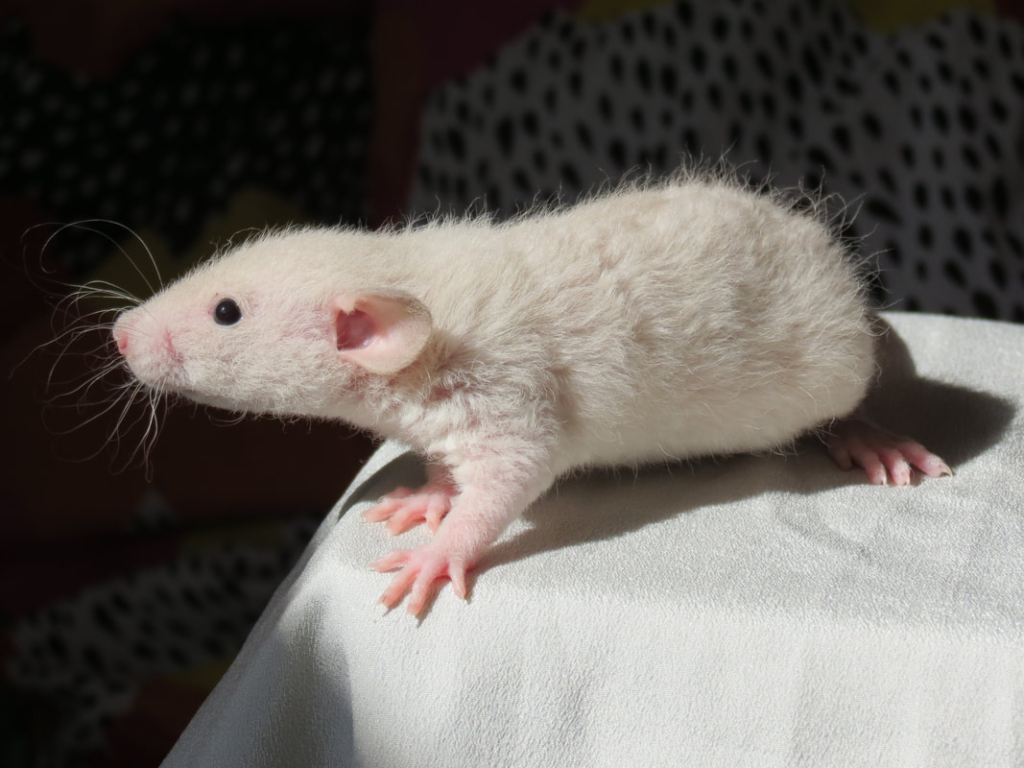
The coarse coat of the bristle-coated rat gives the appearance and feel of a wire brush. When young, the coat may resemble that of a Tyrannosaurus Rex, but as the rat gets older, it will become more straight. The Bristle Coat rat has straight whiskers that are curled at the end, much like Satin Coat rats. It may be any color or pattern.
Other Variants
In addition to these common breeds, there are numerous more variations. Although kennel associations may not have given them much recognition, breeders are aware of them and some owners may be interested in them. While many of them have color-based names, some are distinctive enough to be classified as a different breed.
1. Topaz
The Topaz rat, which is closely related to the Fawn rat in the United States, is well-known for its deep gold hue. The breed standard stipulates that the belly hair must be a silver tint, and it also has very dark eyes that are virtually black.
2. Lilac Agouti
Agouti refers to fur that is banded light and dark with a grizzled appearance, and a pet rat may exhibit a wide range of agouti fur colors. The banding on the purple Agouti combines blue and lilac hues. It is anticipated to have grey feet and a silver belly. Dark ruby or black eyes are ideal.
3. Cinnamon Pearl

Three bands of color are seen on the Cinnamon Pearl rat. The guard hair is silver, the base of the coat is cream, and the center is blue-orange. The Cinnamon Pearl has a distinct silver luster throughout.
4. Silver Fawn
The guard hairs, which are silver in hue, are whence the Silver Fawn derives its moniker of silver. But the Silver Fawn looks much more like a fawn. In the US, a lighter amber hue is desired, while it is possible for this to have a deeper fawn hue. The breed is regarded as appealing, and eyes are anticipated to be pink in hue rather than black.
5. Powder Blue
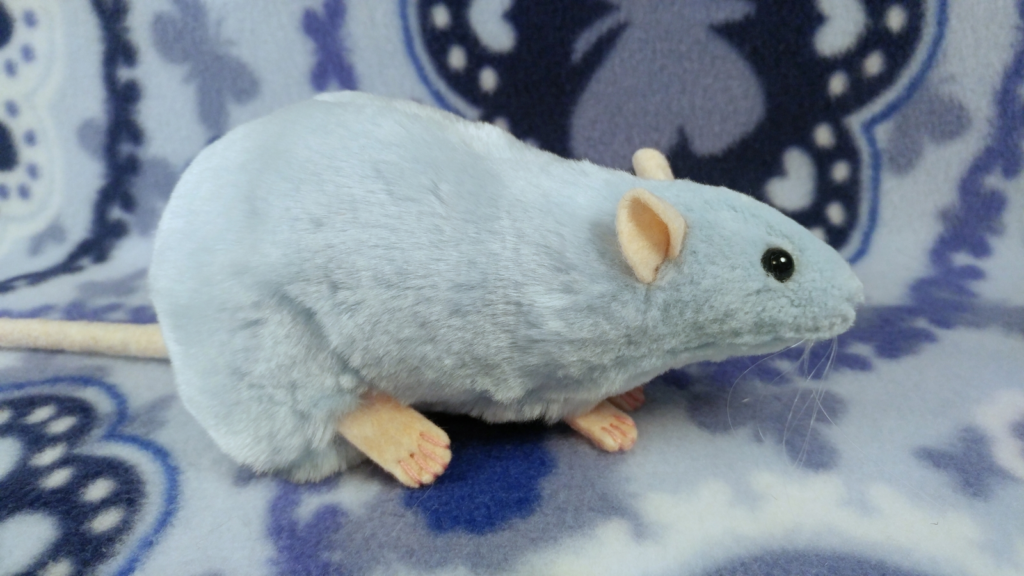
Powder blue is a relatively light shade of blue in comparison to British Blue, which is at the darkest end of the blue spectrum for rats. Pale blue dove is how the color is characterized. Black or ruby eyes.
6. Quicksilver
The hue of the Quicksilver is platinum. It looks vivid blue-grey, and there shouldn’t be any hints of lightening or another hue. The feet should be grey, and the eyes should be a soft ruby.
7. Russian Pearl
It is a cross of the Russian Blue, Pearl, and Mink breeds. It is silver in hue with overtones of cream. Its feet are grey, its eyes are black, and its hair is grey with a grey tip.
8. British Blue
The British Blue is said to be the darkest on this spectrum. The blue gene may vary from a powdered blue to an almost slate-like dark grey. Modern British Blue rats are tough creatures with qualities and health attributes that are comparable to Standard rats, despite the fact that early specimens of blue rats were susceptible to disease. The British Blue should have white toes and have a steel blue tint without any fading.
9. Burmese

Another breed of rat that has a gene name similar to a cat’s is the Burmese. The Burmese breed of rat has black eyes and a toffee-colored coat with seal points.
Conclusion
Rats may be wonderful house pets if they are treated well and often. There are so many different breeds available in a broad range of colors and patterns that there is almost surely one to suit your tastes. Some will reply to their name and learn some very simple instructions. 16 of the most popular breeds, including the 7 breed standards approved by the Kennel Club, are mentioned above. Others do occur, however, such as mixed genus variations and cross variants.







